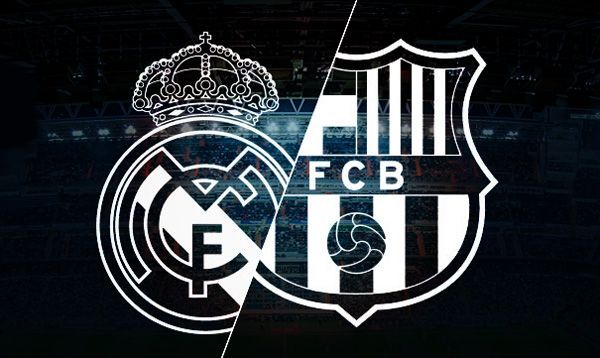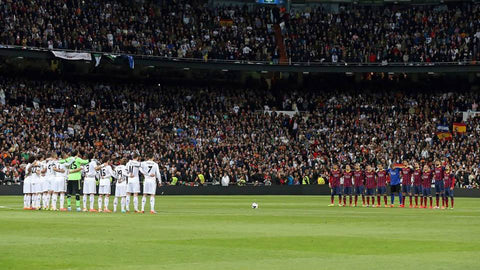
EL CLASICO: THE MOST FAMOUS SPORTING RIVALRY IN THE WORLD
EL CLASSICO
Matches between Real Madrid and FC Barcelona, known commonly as “El Clasico” are the most watched games in football. Two of the biggest clubs in the world battling it out on the pitch and the world’s stage. Let's explore how this heated rivalry developed.

It is in the political and cultural affairs of Spain in the mid-20th century that the rivalry between Barcelona and Real Madrid established itself as one of the most spirited competitions in sports. During the Spanish Civil War (1936-39), supporting your football club took on a meaning much deeper than simply watching a match and wearing a jersey. It became a way to express your own ideals about the world – and to do so alongside a group of like-minded people, rallying behind the colors and beliefs of the organization you supported. This meant that supporting Real Madrid or Barcelona wasn’t just a matter of supporting a football team.
MADRID AND BARCELONA
The two largest cities in Spain have historically taken very different positions on the political spectrum. For the sake of not getting too in-depth into the Spanish Civil War, it’s fair to say that Barcelona and Real Madrid became sporting representations symbolic of the country’s political spectrum and divide. Rooting for your team meant identifying yourself with a full-fledged political movement. It represented something more to fans, extending itself beyond a 90 minute game between these two teams.

As Spanish dictatorship sought to consolidate Spain, (under Francisco Franco) regional cultures, languages and beliefs became increasingly diminished, censored and suppressed. The minority interests, Catalan identity and ideology, was becoming increasingly censored and suppressed. There were a number of events that fueled the fire.
One in particular was when Barcelona and Real Madrid met in the semifinals of the Copa del Generalísimo (the modern-day Copa del Rey). It was a tense, tiebreaking match. At the time, each team was seen as a direct extension of the differences that led to the Spanish Civil War. Dictator Francisco Franco found it highly important that Real Madrid win this tie to further demonstrate his authority – showcasing the power and validity of his dictatorship, and paving the way to a centralized, nationalist Spain.

Throughout the decades following the Spanish Civil War, both clubs and their presidents suffered. Despite this, the clubs continued to be symbolic of opposing sides of the political spectrum, and so the foundation had been built and nurtured for a fierce rivalry.

DI STEFANO
There is still a festering point of contention in the clubs’ rivalry stemming from how Di Stefano came to Madrid. We know him as the legend who led Los Blancos to numerous victories. But, pre-Real Madrid, he was a 25-year-old Argentinian, scoring hundreds of goals for River Plate in Argentina before moving to Millonarios in Colombia.
It seemed he was destined for Barcelona, but was instead acquired by Real Madrid. There’s no proof Di Stefano’s move to Barcelona was sabotaged, but still think politics again meddled in sporting affairs. Regardless, Di Stefano scored a brace in his first El Clasico, a 5-0 destruction. With Di Stefano leading the lines, Real Madrid went on to claim five European Cups.

These same alliances continue to play a role in modern day Clasicos. Catalan flags are a common sight at Camp Nou, while Spanish national flags are frequently flown at Santiago Bernabéu. Barcelona – the football club – has come to represent not just football, but a symbol of Catalan heritage and historical views.
BLAUGRANA
Following the 2017 Catalan independence movement and the subsequent trial and imprisonment of Catalan independence leaders, the 2019 El Clásico provided a stage for political turmoil, once again spilling over into this football rivalry. Due to security concerns, El Clasico was moved from October 2019 (shortly after the confirmed prison sentences for the former Catalan independence leaders) to December 2019. The eventual battle between Barcelona and Madrid played out on the pitch as both teams made their impassioned voices heard, with the Blaugrana rallying for more than the match.

Catalan President Quim Torra, and former Barcelona manager Pep Guardiola, encouraged members of both sides of the political struggle to “sit and talk,” to try to sort out the conflict. The Blaugrana fans took this phrase and made it a part of their game display, politicizing El Clásico to put on a peaceful political show of passion. Their show of support demonstrated with banners, signs and protests outside the stadium, at one point interrupting the second half by throwing #SpainSitAndTalk footballs onto the pitch during a stoppage in play.

THE BEAUTIFUL GAME
All in all, this rivalry has its roots deeply embedded as much in politics as well as on the football pitch, essentially dividing the country into “one” or the “other.” Whether intentional or not, these clubs represent different ideologies of the fans who love them. This rivalry will live long in the hearts of Spaniards and fans all around the world. Yet still, they share a country and a critical common thread -- an eternal love for the beautiful game.
Be a TENLEGEND.
